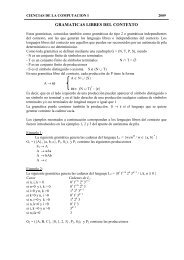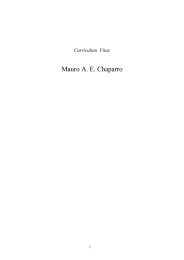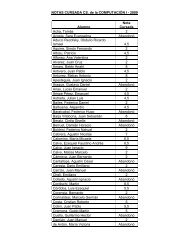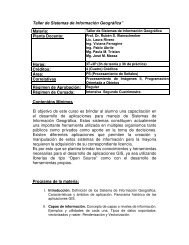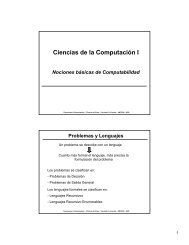Libro de Resúmenes / Book of Abstracts (Español/English)
Libro de Resúmenes / Book of Abstracts (Español/English)
Libro de Resúmenes / Book of Abstracts (Español/English)
You also want an ePaper? Increase the reach of your titles
YUMPU automatically turns print PDFs into web optimized ePapers that Google loves.
Resumenes 108<br />
minimizar la necesidad <strong>de</strong> aplicar controles químicos para mantener la<br />
población <strong>de</strong> ácaros en niveles aceptables. Esto constituiría un aporte muy<br />
importante en países productores y exportadores <strong>de</strong> miel y sus <strong>de</strong>rivados,<br />
que <strong>de</strong>ben adaptar las técnicas <strong>de</strong> control a las rígidas normas<br />
internacionales sobre índices <strong>de</strong> contaminación.<br />
El sistema <strong>de</strong> ecuaciones diferenciales para la dinámica <strong>de</strong>l acaro es<br />
el siguiente:<br />
dM<br />
= γ 1D<br />
+ γ 2W<br />
− µ M<br />
dt<br />
dD<br />
D<br />
= r1φ<br />
() t ( 1−<br />
ς ( D ) M ( 1−<br />
) − γ 1D<br />
− µ 1D<br />
dt<br />
K<br />
dW<br />
dt<br />
= r φ<br />
2<br />
() t ς ( D)<br />
M − γ W − µ W.<br />
En este trabajo la función <strong>de</strong> elección <strong>de</strong> celda es:<br />
D<br />
ς ( D)<br />
= θ + ξ .<br />
K1<br />
θ + ξ = 1.<br />
Y la función anual <strong>de</strong> celdas disponibles:<br />
N<br />
∑<br />
i=<br />
0<br />
2<br />
φ ( t)<br />
= Exp(<br />
−α<br />
( t −180<br />
− i365)<br />
).<br />
A mo<strong>de</strong>l in differential equations to <strong>de</strong>scribe the mite Varroa<br />
<strong>de</strong>structor population dynamic in Apis mellifera colonies.<br />
The aim <strong>of</strong> this work is <strong>de</strong>scribe the population dynamic <strong>of</strong> Varroa<br />
Destructor, a vector <strong>of</strong> naturally occurring honeybee viruses such as the<br />
<strong>de</strong>formed wing virus (DWV) [Martin, Medina]. The female <strong>of</strong> V. Destructor<br />
remain over the adult bee ( phoretic stage), and as honey bee brood<br />
becomes available, the mites leaves <strong>de</strong> adult bees to reproduce insi<strong>de</strong> the<br />
bee brood cells [3], which it inva<strong>de</strong>s just prior to it being capped [5]. After<br />
14 and 12 days <strong>of</strong> drone and worker respective cells capped, the mite<br />
mother and her adult female progeny emerge over the <strong>de</strong>veloped bee to<br />
begin the life cycle once again [3], [4], [5].<br />
The original host <strong>of</strong> V. Destructor is Apis Cerana, which have natural<br />
mechanism <strong>of</strong> <strong>de</strong>fense, like removal <strong>of</strong> infested brood, limiting the growth <strong>of</strong><br />
the mite population. This not occurs in Apis Mellifera, being necessary<br />
human control to avoid the hive collapse.<br />
The mo<strong>de</strong>l proposed in this work to analyses the mite increase is a<br />
system <strong>of</strong> differential equations for the mite dynamic with three categories:<br />
the phoretic stage <strong>of</strong> the mite and two categories consi<strong>de</strong>ring the mite<br />
brood, in drone and worker cells, with their owns parameters, as<br />
reproduction, <strong>de</strong>veloped time and emergent mortality.<br />
2<br />
1<br />
2


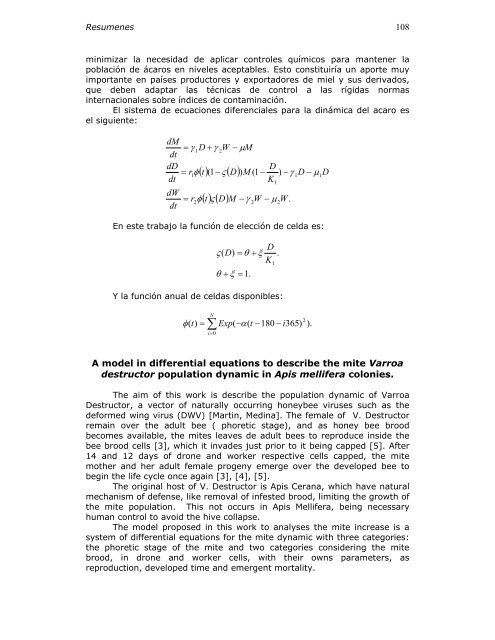
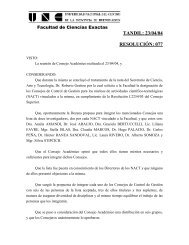
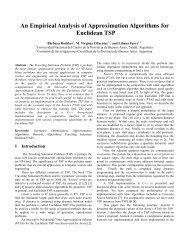
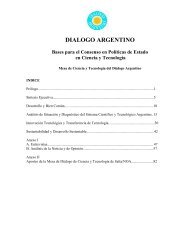
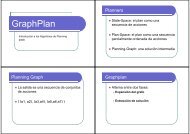
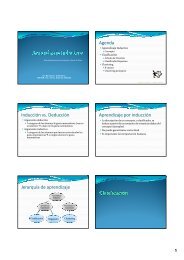
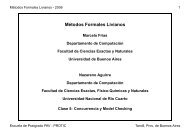
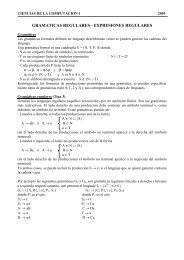

![Clase 13 [pdf]](https://img.yumpu.com/19616969/1/190x245/clase-13-pdf.jpg?quality=85)

